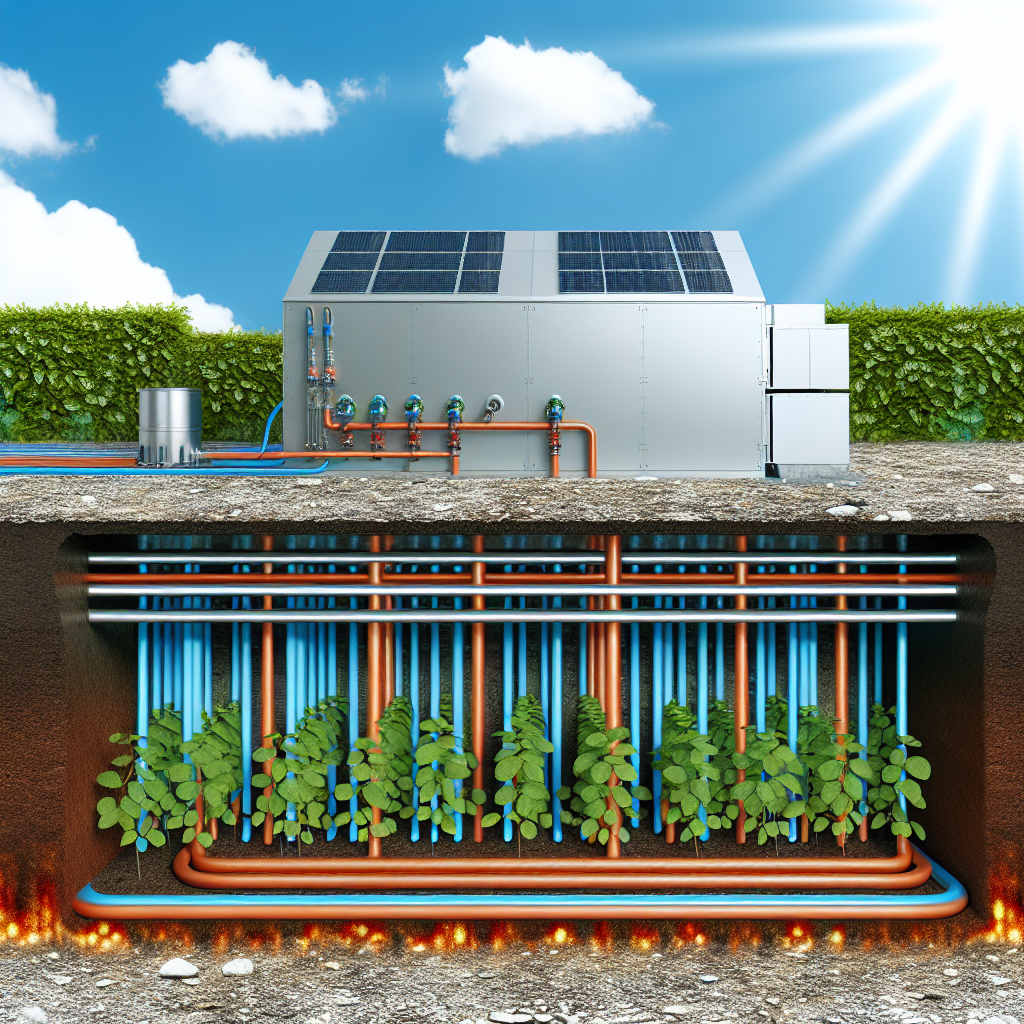Published: Apr 01, 2025

In recent years, more and more homeowners are turning to geothermal heating and cooling systems as a sustainable and energy-efficient alternative to traditional HVAC systems. But what exactly is geothermal heating and cooling, and how does it work? In this blog post, we will explore the ins and outs of geothermal systems, their benefits, installation process, and maintenance requirements to help you decide if this green technology is the right choice for your home.
Geothermal heating and cooling, also known as geothermal heat pumps or ground-source heat pumps, utilize the earth's stable underground temperature to provide heating, cooling, and hot water for residential and commercial buildings. Unlike traditional systems that rely on burning fossil fuels, geothermal systems harness the natural heat stored in the earth to regulate indoor temperatures efficiently.
Geothermal systems work by transferring heat between your home and the ground through a series of pipes buried underground, called a ground loop. During the winter, the system extracts heat from the ground and delivers it into your home to warm it up. In the summer, the process is reversed as the system removes heat from your home and transfers it back into the ground, effectively cooling the indoor space.
Geothermal systems are highly energy-efficient, providing substantial savings on heating and cooling costs compared to traditional HVAC systems. By harnessing the earth's natural heat, these systems can achieve impressive efficiencies, often exceeding 400% in heating mode and 500% in cooling mode.
One of the significant advantages of geothermal heating and cooling is its minimal environmental impact. By using renewable energy from the earth, these systems produce significantly lower greenhouse gas emissions and reduce dependence on non-renewable energy sources, contributing to a greener and more sustainable future.
While the upfront cost of installing a geothermal system may be higher than traditional HVAC systems, the long-term savings on energy bills can offset the initial investment over time. With lower operating costs and minimal maintenance requirements, geothermal systems offer homeowners a cost-effective heating and cooling solution in the long run.
Installing a geothermal heating and cooling system involves several key steps:
Site Evaluation: A qualified HVAC contractor will assess your property to determine the suitability of geothermal installation based on factors like soil conditions, available land, and local climate.
Ground Loop Installation: The most critical component of a geothermal system is the ground loop, which can be installed vertically in deep boreholes or horizontally in trenches depending on the space available.
Indoor Unit Installation: A heat pump unit will be installed indoors to distribute the conditioned air throughout your home.
System Commissioning: Once the installation is complete, the system will be thoroughly tested and commissioned to ensure optimal performance and efficiency.
While geothermal systems are known for their durability and reliability, regular maintenance is essential to ensure efficient operation and extend the lifespan of the system. Some maintenance tasks include:
Periodic Inspections: Schedule routine inspections by a professional HVAC technician to check for leaks, proper refrigerant levels, and overall system performance.
Filter Replacement: Clean or replace air filters regularly to maintain good indoor air quality and prevent airflow restrictions.
Annual Tune-Ups: Schedule annual maintenance visits to inspect and tune up the system for optimal efficiency and performance.
Geothermal heating and cooling systems offer an energy-efficient, environmentally friendly, and cost-effective solution for residential heating and cooling needs. By harnessing the earth's natural heat, these systems can provide year-round comfort while reducing carbon emissions and lowering energy bills. If you are considering upgrading to a sustainable heating and cooling solution for your home, geothermal technology may be the answer you're looking for.

Our expert technicians are ready to assist you 24/7!
Contact Us Today!Read our latest articles for helpful information about heating, cooling, and air quality.
Regular HVAC maintenance is essential for improving energy efficiency, extending the lifespan of your system, enhancing...
Read MoreImplement these 10 tips to enhance the air quality in your home, promoting a healthier living environment for you and y...
Read MoreRegular seasonal HVAC maintenance is essential for maximizing system efficiency, ensuring indoor air quality, preventing...
Read MoreSmart thermostats offer energy savings, convenience, learning capabilities, and integration with smart home systems, mak...
Read More